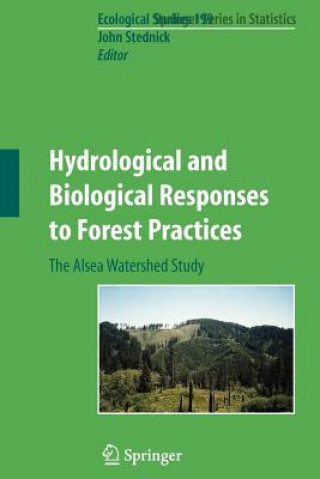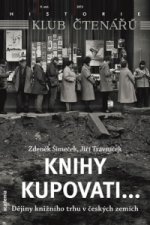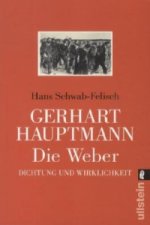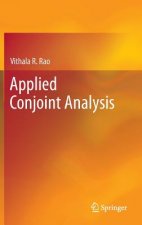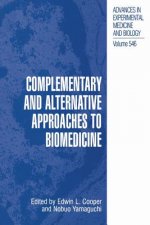
Livrare
Consilier de cumpărături





Nu se pretează? Nu contează! La noi puteți returna bunurile în 30 de zile
 Voucher cadou
orice valoare
Voucher cadou
orice valoare
Cu un voucher cadou nu veți da greș. În schimbul voucherului, destinatarul își poate alege orice din oferta noastră.
Hydrological and Biological Responses to Forest Practices
 engleză
engleză
 488 b
488 b
30 de zile pentru retur bunuri
Ar putea de asemenea, să te intereseze


My original idea to reactivate the Alsea streamflow monitoring program was part of a sabbatical leave supported by the National Council for Air and Stream Improvement, Inc. (NCASI) and the Department of Forest Engineering, Oregon State University (OSU). The camaraderie of George Ice and Ben Stout (NCASI) in particular made for an enjoyable leave and I want to acknowledge the late Hank Froehlich and Jim Kiser (OSU) for our discussions on what does it all mean. My plan was to finish this book at OSU, but that opportunity was not presented. Nonetheless, the book took longer to complete than I originally thought. The interest by other investigators and new support prompted me to not let the perfect be the enemy of the good. It was my final decisions that went to press, thus, any errors or omissions are my responsibility not authors or reviewers.§This book does not completely cover all the lessons learned. Even with the conveniences of modern science, data loggers fail, water level floats leak, and water quality samples disappear between the field and the lab. Those are the lessons that have to be experienced to be learned, or shared over a beer. This compilation may not recognize all the people who contributed to efforts in the Alsea watersheds but any oversight on my part was not intended. §A note of appreciation goes to James D. Hall at OSU for his willingness to check the details and find the nits, especially in the references. It was special to have one of the original investigators be part of this effort. Thanks to C.A. Troendle for our continued discussions on forest hydrology. Thanks to my family, especially Susan.The camaraderie of George Ice and Ben Stout (NCASI) in particular made for an enjoyable leave and I want to acknowledge the late Hank Froehlich and Jim Kiser (OSU) for our discussions on what does it all mean. My plan was to finish this book at OSU, but that opportunity was not presented. Nonetheless, the book took longer to complete than I originally thought. The interest by other investigators and new support prompted me to not let the perfect be the enemy of the good. It was my final decisions that went to press, thus, any errors or omissions are my responsibility not authors or reviewers.§This book does not completely cover all the lessons learned. Even with the conveniences of modern science, data loggers fail, water level floats leak, and water quality samples disappear between the field and the lab. Those are the lessons that have to be experienced to be learned, or shared over a beer. This compilation may not recognize all the people who contributed to efforts in the Alsea watersheds but any oversight on my part was not intended.§A note of appreciation goes to James D. Hall at OSU for his willingness to check the details and find the nits, especially in the references. It was special to have one of the original investigators be part of this effort. Thanks to C.A. Troendle for our continued discussions on forest hydrology. Thanks to my family, especially Susan.The Alsea Watershed Study, established in 1959 and reactivated in 1989 as the New Alsea Watershed Study, evaluated the effects of timber harvesting on water resources and salmonid habitat and populations in the temperate coniferous forests of the Oregon Coast Range. This was the first paired watershed experiment to focus on aquatic habitat and organism response to forest practices. Demonstrating the importance of maintaining streamside vegetation in protecting water quality and fish habitat during timber harvest operations, the study led directly to regulations in the Oregon Forest Practices Act of 1971 that required leaving streamside vegetation in harvest units. Decades of research have provided important information and lessons for watershed research and management.§Through analyses of works generated by the study, Hydrological and Biological Responses to Forest Practices: The Alsea Watershed Study addresses the quantification of forest resource sustainability and bolsters the case for long-term monitoring at a time when managers and policy makers are searching for ways to restore the runs of salmon and steelhead to rivers and streams of the Pacific Northwest. Edited by John D. Stednick, a forest hydrologist responsible for the study s reactivation, this book will be of interest to students in natural resources, land managers, policy makers, and researchers, particularly in water and fishery resources.§About the Editor: John D. Stednick is a professor of Watershed Science at Colorado State University in Fort Collins, CO.
Informații despre carte
 engleză
engleză
Categorii




 Cum să cumpăr
Cum să cumpăr















